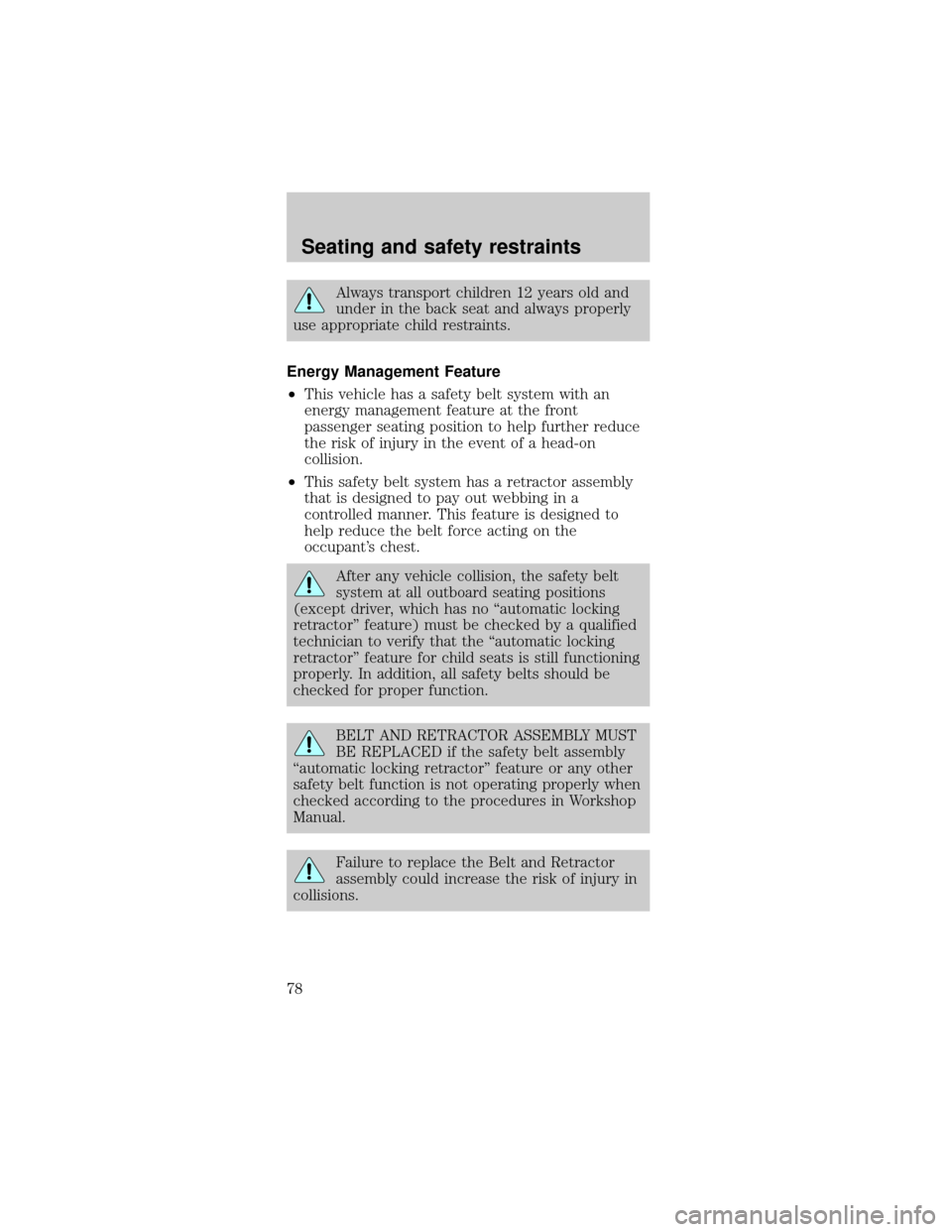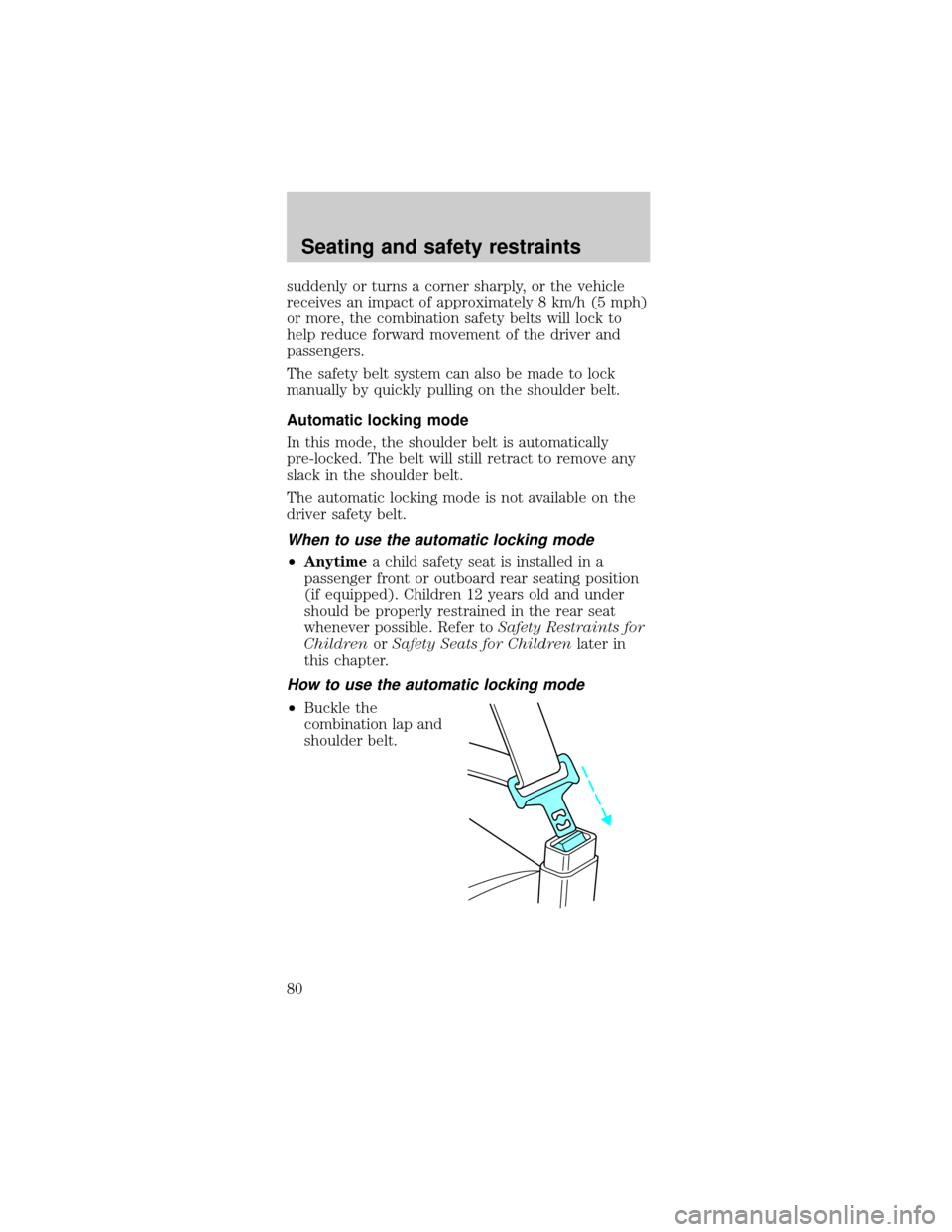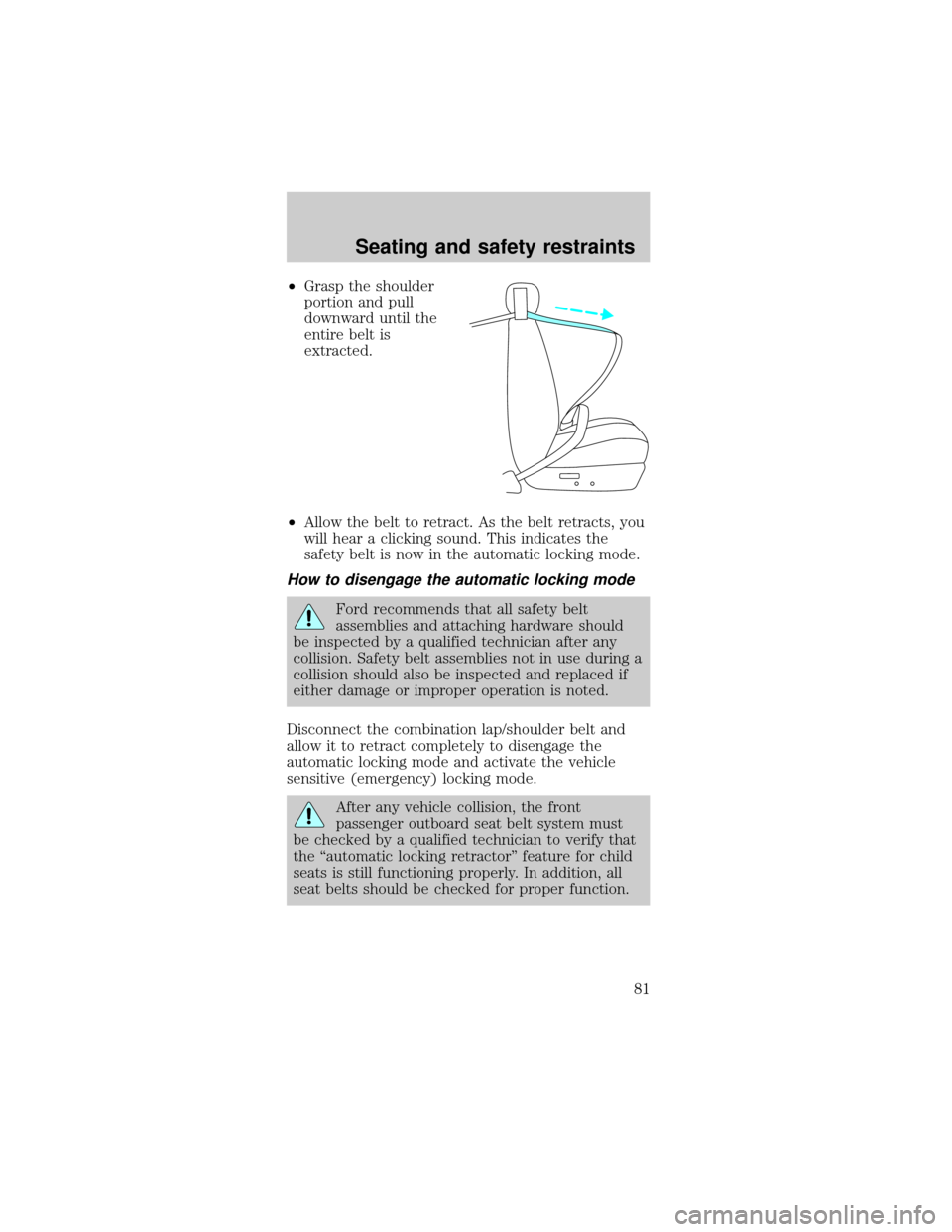Page 4 of 240
These are some of the symbols you may see on your
vehicle.
Vehicle Symbol Glossary
Safety Alert
See Owner's Guide
Fasten Safety BeltAir Bag-Front
Air Bag-SideChild Seat
Child Seat
Installation WarningChild Seat Tether
Anchorage
Brake SystemAnti-Lock Brake
System
Brake Fluid -
Non-Petroleum
BasedTraction Control
Master Lighting
SwitchHazard Warning
Flasher
Fog Lamps-FrontFuse Compartment
Fuel Pump ResetWindshield
Wash/Wipe
Windshield
Defrost/DemistRear Window
Defrost/Demist
Introduction
4
Page 5 of 240
Vehicle Symbol Glossary
Power Windows
Front/Rear
Power Window
Lockout
Child Safety Door
Lock/UnlockInterior Luggage
Compartment
Release Symbol
Panic AlarmEngine Oil
Engine CoolantEngine Coolant
Temperature
Do Not Open When
HotBattery
Avoid Smoking,
Flames, or SparksBattery Acid
Explosive GasFan Warning
Power Steering
FluidMaintain Correct
Fluid LevelMAX
MIN
Emission SystemEngine Air Filter
Passenger
Compartment Air
FilterJack
Check fuel cap
Introduction
5
Page 71 of 240
INTERIOR LUGGAGE COMPARTMENT
RELEASE
Your vehicle is equipped with a mechanical interior
luggage compartment release handle that provides a
means of escape for children and adults in the event
they become locked inside the luggage compartment.
Adults are advised to familiarize themselves with the
operation and location of the release handle.
To open the luggage
compartment door (lid)
from the inside, pull
the illuminated ªTº
shaped handle and
push up on the trunk
lid. The material that
the handle is made of
will glow for hours in
the darkness of the
luggage compartment
following brief exposure
to ambient light.
The ªTº shaped handle will be located either on the
luggage compartment door (lid) or inside the
luggage compartment near the tail lamps.
Controls and features
71
Page 72 of 240
Keep vehicle
doors and
luggage compartment
locked and keep keys
out of a child's reach.
Unsupervised
children could lock
themselves in an
open trunk and risk
injury. Children
should be taught not
to play in vehicles.
On hot days, the temperature in the trunk
or vehicle interior can rise very quickly.
Exposure of people or animals to these high
temperatures for even a short time can cause
death or serious heat-related injuries, including
brain damage. Small children are particularly at
risk.
Controls and features
72
Page 78 of 240

Always transport children 12 years old and
under in the back seat and always properly
use appropriate child restraints.
Energy Management Feature
²This vehicle has a safety belt system with an
energy management feature at the front
passenger seating position to help further reduce
the risk of injury in the event of a head-on
collision.
²This safety belt system has a retractor assembly
that is designed to pay out webbing in a
controlled manner. This feature is designed to
help reduce the belt force acting on the
occupant's chest.
After any vehicle collision, the safety belt
system at all outboard seating positions
(except driver, which has no ªautomatic locking
retractorº feature) must be checked by a qualified
technician to verify that the ªautomatic locking
retractorº feature for child seats is still functioning
properly. In addition, all safety belts should be
checked for proper function.
BELT AND RETRACTOR ASSEMBLY MUST
BE REPLACED if the safety belt assembly
ªautomatic locking retractorº feature or any other
safety belt function is not operating properly when
checked according to the procedures in Workshop
Manual.
Failure to replace the Belt and Retractor
assembly could increase the risk of injury in
collisions.
Seating and safety restraints
78
Page 80 of 240

suddenly or turns a corner sharply, or the vehicle
receives an impact of approximately 8 km/h (5 mph)
or more, the combination safety belts will lock to
help reduce forward movement of the driver and
passengers.
The safety belt system can also be made to lock
manually by quickly pulling on the shoulder belt.
Automatic locking mode
In this mode, the shoulder belt is automatically
pre-locked. The belt will still retract to remove any
slack in the shoulder belt.
The automatic locking mode is not available on the
driver safety belt.
When to use the automatic locking mode
²Anytimea child safety seat is installed in a
passenger front or outboard rear seating position
(if equipped). Children 12 years old and under
should be properly restrained in the rear seat
whenever possible. Refer toSafety Restraints for
ChildrenorSafety Seats for Childrenlater in
this chapter.
How to use the automatic locking mode
²Buckle the
combination lap and
shoulder belt.
Seating and safety restraints
80
Page 81 of 240

²Grasp the shoulder
portion and pull
downward until the
entire belt is
extracted.
²Allow the belt to retract. As the belt retracts, you
will hear a clicking sound. This indicates the
safety belt is now in the automatic locking mode.
How to disengage the automatic locking mode
Ford recommends that all safety belt
assemblies and attaching hardware should
be inspected by a qualified technician after any
collision. Safety belt assemblies not in use during a
collision should also be inspected and replaced if
either damage or improper operation is noted.
Disconnect the combination lap/shoulder belt and
allow it to retract completely to disengage the
automatic locking mode and activate the vehicle
sensitive (emergency) locking mode.
After any vehicle collision, the front
passenger outboard seat belt system must
be checked by a qualified technician to verify that
the ªautomatic locking retractorº feature for child
seats is still functioning properly. In addition, all
seat belts should be checked for proper function.
Seating and safety restraints
81
Page 96 of 240

When installing a child safety seat:
²Review and follow
the information
presented in theAir
Bag Supplemental
Restraint System
section in this
chapter.
²Use the correct
safety belt buckle for that seating position (the
buckle closest to the direction the tongue is
coming from).
²Insert the belt tongue into the proper buckle until
you hear a snap and feel it latch. Make sure the
tongue is securely fastened in the buckle.
²Keep the buckle release button pointing up and
away from the safety seat, with the tongue
between the child seat and the release button, to
prevent accidental unbuckling.
²Place seat back in upright position.
²Put the safety belt in the automatic locking mode.
Refer toAutomatic locking mode(passenger
side front and outboard rear seating positions) (if
equipped).
Ford recommends the use of a child safety seat
having a top tether strap. Install the child safety seat
in a seating position which is capable of providing a
tether anchorage. For more information on top
tether straps, refer toAttaching safety seats with
tether straps.
Carefully follow all of the manufacturer's
instructions included with the safety seat
you put in your vehicle. If you do not install and
use the safety seat properly, the child may be
injured in a sudden stop or collision.
Seating and safety restraints
96